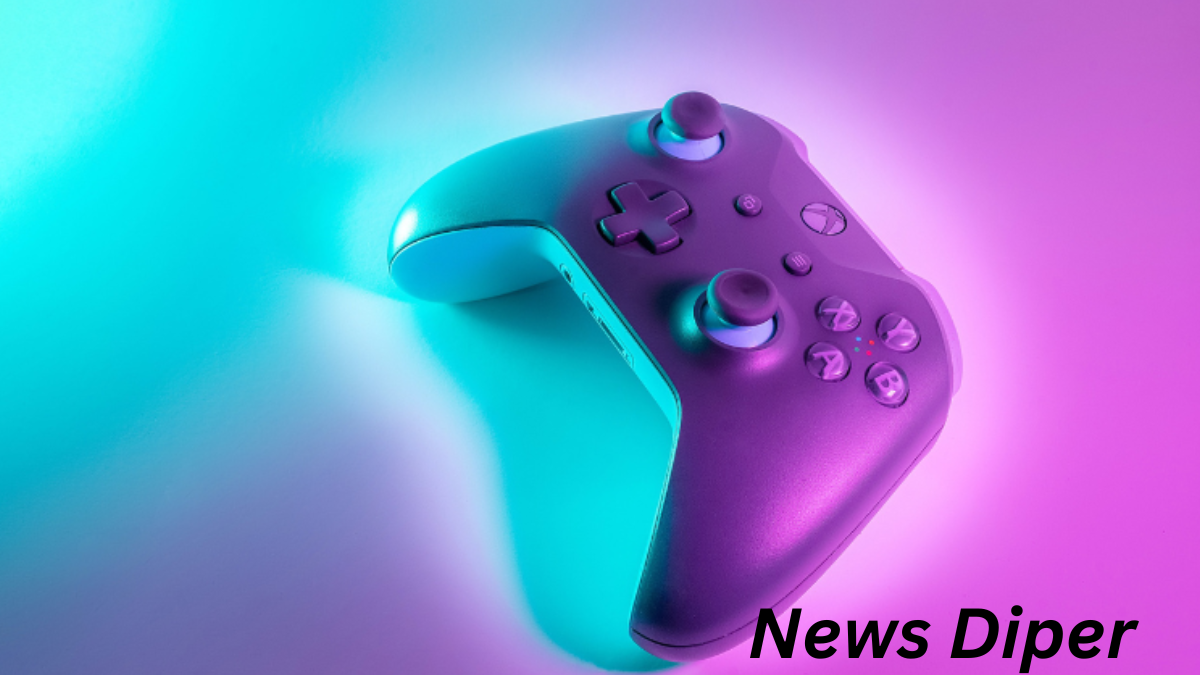

Connectivity Issues HSSGamepad Understanding Diagnosing and Resolving Problems
Introduction to HSSGamepad and Its Connectivity Landscape
Connectivity Issues HSSGamepad is a modern wireless controller designed for versatile gaming across multiple platform including Android, iOS, Windows PCs, and even emulators. Its appeal lies in its ergonomic design, responsive buttons, and the promise of hassle-free wireless connectivity through Bluetooth or USB. However, like many wireless gaming peripherals, the HSSGamepad is not immune to connectivity issues that frustrate users during gameplay. These problems range from intermittent disconnections to failure to pair altogether. To understand the core of these issues, it is crucial to look at the underlying technologies and usage patterns that influence performance.
Common Scenarios Where Connectivity Fails
The first step in addressing connectivity issues with the HSSGamepad is identifying the specific scenario under which the problem arises. Some users report that the gamepad refuses to pair with their smartphones, while others face disconnections during intense gaming sessions. Sometimes, the controller appears paired but becomes unresponsive, creating confusion about whether the problem lies in the controller, the device, or the software it interacts with.
Another common scenario involves the Connectivity Issues HSSGamepad be recognized by PCs or laptops via Bluetooth. Even when successfully paired, some games do not detect the controller inputs correctly, leading to mismatches or delays in commands. Such challenges often occur due to software drivers, outdated firmware, or operating system compatibility. In mobile gaming, connectivity interruptions might happen more frequently due to battery optimization settings, background processes, or Bluetooth signal interference.
Understanding the Bluetooth Framework in HSSGamepad
Bluetooth is the core connectivity method used by the HSSGamepad. Unlike older wired connections, Bluetooth offers wireless freedom but at the cost of reliability in certain conditions. Bluetooth operates within the 2.4 GHz frequency, which is a crowded spectrum shared with Wi-Fi, microwaves, and many smart home devices. Any interference in this band can affect the stability of the controller’s connection.
The pairing process involves a handshake between the gamepad and the target device. If either device has outdated firmware or lacks support for the Bluetooth version used by the HSSGamepad, the pairing can fail. Moreover, if the controller is trying to pair with multiple devices or retains pairing memory of previously connected systems, it may experience confusion and not initiate a clean connection. Many connectivity issues are rooted in such complexities.
Firmware and Driver Dependencies
The HSSGamepad relies on specific firmware to manage its wireless protocols, input signals, and device compatibility. If the firmware is outdated, it can result in inconsistent behavior, including input lag, sudden disconnection, or failure to recognize game-specific controls. Updating firmware is a process often overlooked by users, but it remains a crucial step in troubleshooting.
For PC users, the importance of drivers cannot be overstated. Operating systems like Windows require proper drivers to interpret the controller’s signals correctly. When these drivers are missing, outdated, or corrupted, the controller might still connect via Bluetooth but will not function correctly within games or even appear in system device lists. Some PC configurations might mistake the gamepad for a generic device, leading to incorrect input mapping or rendering some buttons unusable.
Software Conflicts and Game Compatibility
Another factor influencing connectivity performance is software compatibility. Even when the controller is technically connected, some games do not support third-party devices or require specific settings to enable external gamepad support. Emulator software often demands detailed configuration to map controller buttons properly. If this mapping process is not performed, the gamepad might appear connected but remain unresponsive within the gameplay environment.
In cases where mobile devices are concerned, background applications and system permissions may block or restrict the gamepad’s access. Android’s adaptive battery features or iOS’s app sandboxing may interfere with smooth communication between the gamepad and the game application. If a game is not optimized for external controller input, it might reject the HSSGamepad even when it is properly paired.
Environmental and Physical Interference
The environment in which a user plays also plays a significant role in determining connectivity stability. Since Bluetooth operates within a limited range, any obstruction between the controller and the device—such as walls, metal surfaces, or electronic devices—can weaken the signal. Additionally, using the gamepad in environments with multiple Bluetooth-enabled devices can lead to signal congestion, which contributes to packet loss or disconnection.
Physical damage to the gamepad is another issue. If the internal Bluetooth chip or antenna is damaged due to drops or mishandling, the signal strength may weaken, causing recurring disconnects. Furthermore, low battery levels in the controller can result in sudden shutoffs or inconsistent signal transmission. Users often overlook battery health as a critical component of stable wireless performance.
The Role of Operating System Updates
Operating system updates on target devices can significantly impact how well the HSSGamepad connects and functions. With every update, especially major ones, Bluetooth protocols and driver management are sometimes modified. This can lead to previously functional devices failing to pair or exhibiting unexpected behavior. For instance, an Android or Windows update might enhance security settings that block third-party Bluetooth devices from connecting without specific permissions.
Additionally, OS updates might reset previously saved Bluetooth profiles or clear cache data that aids in seamless connectivity. When these profiles are wiped, the gamepad might appear as a new device requiring fresh pairing. If the user fails to remove the old profile or re-initiate the pairing process correctly, connectivity may break down.
Troubleshooting Techniques to Regain Functionality
When facing connectivity issues, structured troubleshooting becomes necessary. The first approach involves identifying whether the problem lies in the gamepad or the target device. Connecting the controller to a different device and observing behavior can isolate the root cause. If the gamepad works on another system, the issue is more likely with the original device’s software or settings.
Restarting both the controller and the target device often helps clear temporary conflicts. Unpairing and re-pairing the gamepad, ensuring Bluetooth visibility, and charging the gamepad to full battery are foundational steps. On PCs, users should check Device Manager to confirm the gamepad is listed correctly and ensure no driver issues are flagged. On mobile devices, disabling battery optimization for games or the Bluetooth service can help maintain stable connections.
Manufacturer Support and Community Solutions
Users who continue to experience connectivity problems often turn to the manufacturer’s support for answers. In many cases, official websites offer firmware updates, troubleshooting guides, and FAQs to assist users. However, online communities like Reddit, gaming forums, and YouTube tutorials often provide practical, real-world fixes that are not found in manuals.
These communities may suggest solutions such as using third-party mapping software on PC, adjusting Bluetooth timeout settings on Android, or replacing the internal battery of the gamepad. While such fixes may void warranties, they reflect the dedication of the gaming community to keep devices like the HSSGamepad functional across evolving technologies and platforms.
Future Prospects and Evolving Technologies
As gaming becomes more cross-platform and cloud-based, the expectations from wireless controllers like the HSSGamepad will only grow. Gamepad manufacturers must constantly refine firmware and hardware to maintain compatibility with the latest versions of Android, iOS, Windows, and even gaming consoles. Future versions of the HSSGamepad may include advanced features like Bluetooth 5.2 for more stable connectivity, customizable button layouts, and adaptive compatibility with streaming platforms.
Developers may also introduce software companion apps to manage controller settings, update firmware, and provide diagnostics—all of which can reduce connectivity headaches. As gamers demand seamless plug-and-play functionality, the pressure on manufacturers to eliminate connectivity hurdles will increase.
Conclusion Balancing Expectations and Technical Realities
The connectivity issues faced by HSSGamepad users are a reflection of the broader challenges in wireless gaming technology. While the controller offers convenience and performance in ideal scenarios, real-world environments introduce variables that disrupt this balance. Bluetooth limitations, software mismatches, battery health, and even operating system behavior all play a part in determining the success of a gaming session.
For users, staying informed about firmware updates, understanding device compatibility, and maintaining proper troubleshooting habits are the best defenses against recurring connectivity problems. The HSSGamepad remains a powerful and adaptable tool, but like all technology, it requires attentive care to function at its best. As wireless gaming continues to evolve, resolving these connectivity issues becomes not just a matter of performance but an essential part of the gaming experience.
Frequently Asked Questions
Why does my HSSGamepad keep disconnecting during gameplay?
This could be due to low battery, Bluetooth interference, or outdated firmware. Ensure the controller is charged and try updating its software.
How do I reset the HSSGamepad to factory settings?
Hold down the pairing button for several seconds until the LED blinks rapidly. Refer to the manual for exact steps as this varies by model.
Can the HSSGamepad connect to iOS devices?
Yes, it can connect to iPhones and iPads that support external gamepads via Bluetooth, especially with iOS versions that allow third-party controller input.
What should I do if my PC doesn’t recognize the gamepad?
Check for the latest drivers, update Bluetooth Connectivity Issues HSSGamepad ensure Windows is configured to accept external input devices.
Is there a way to update the firmware of the HSSGamepad?
Some models come with PC software or apps that allow firmware updates. Check the manufacturer’s website or support channels for specific instructions.





